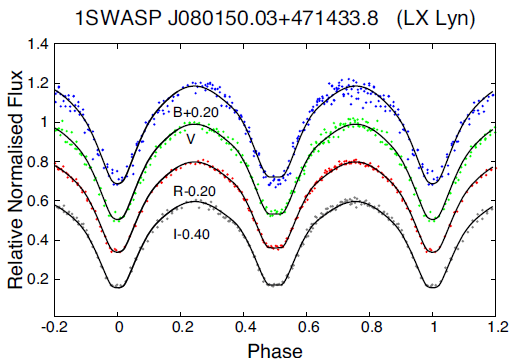CoBiToM Project — II: Evolution of contact binary systems close to the orbital period cut-off
Loukaidou, G. A. ; Gazeas, K. D. ; Palafouta, S. ; Athanasopoulos, D. ; Zola, S. ; Liakos, A. ; Niarchos, P. G. ; Hakala, P. ; Essam, A. ; Hatzidimitriou, D.
eprint arXiv:2112.06631
December 2021
Abstract
Ultra-short orbital period contact binaries (Porb < 0.26 d) host some of the smallest and least massive stars. These systems are faint and rare, and it is believed that they have reached a contact configuration after several Gyrs of evolution via angular momentum loss, mass transfer and mass loss through stellar wind processes. This study is conducted in the frame of Contact Binaries Towards Merging (CoBiToM) Project and presents the results from light curve and orbital analysis of 30 ultra-short orbital period contact binaries, with the aim to investigate the possibility of them being red nova progenitors, eventually producing merger events. Approximately half of the systems exhibit orbital period modulations, as a result of mass transfer or mass loss processes. Although they are in contact, their fill-out factor is low (less than 30 per cent), while their mass ratio is larger than the one in longer period contact binaries. The present study investigates the orbital stability of these systems and examines their physical and orbital parameters in comparison to those of the entire sample of known and well-studied contact binaries, based on combined spectroscopic and photometric analysis. It is found that ultra-short orbital period contact binaries have very stable orbits, while very often additional components are gravitationally bound in wide orbits around the central binary system. We confirmed that the evolution of such systems is very slow, which explains why the components of ultra-short orbital period systems are still Main Sequence stars after several Gyrs of evolution.

